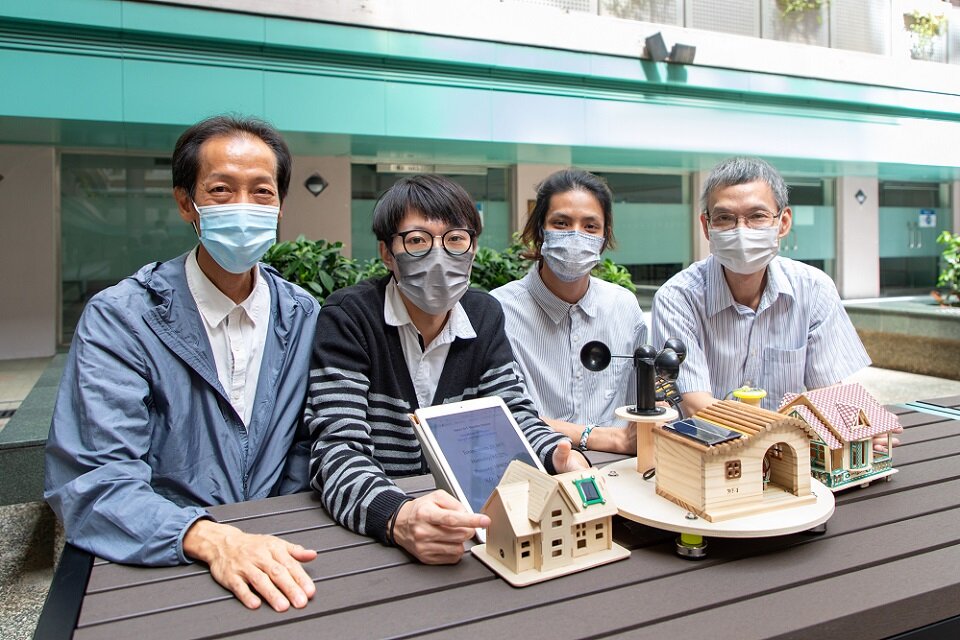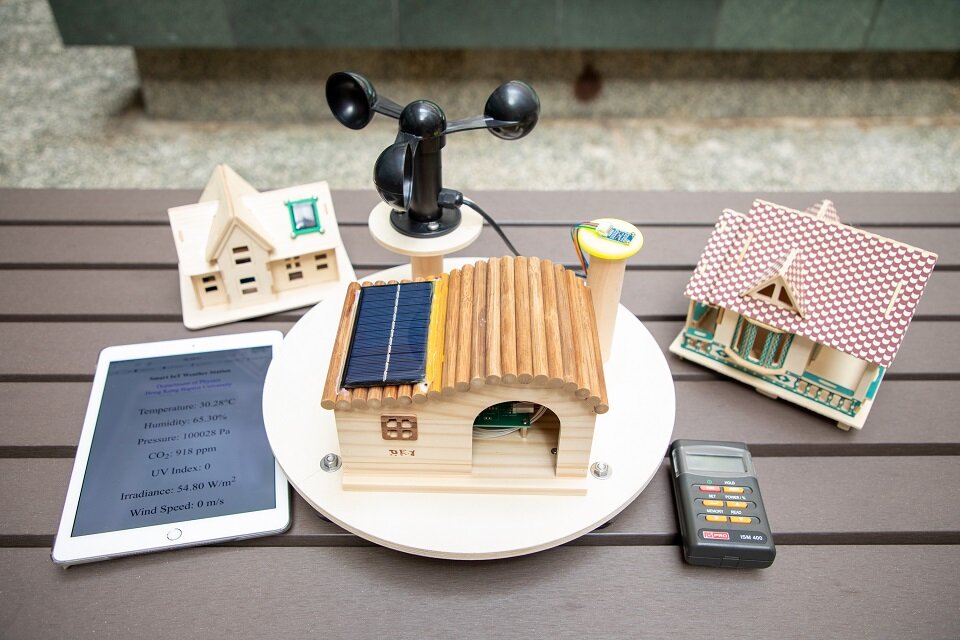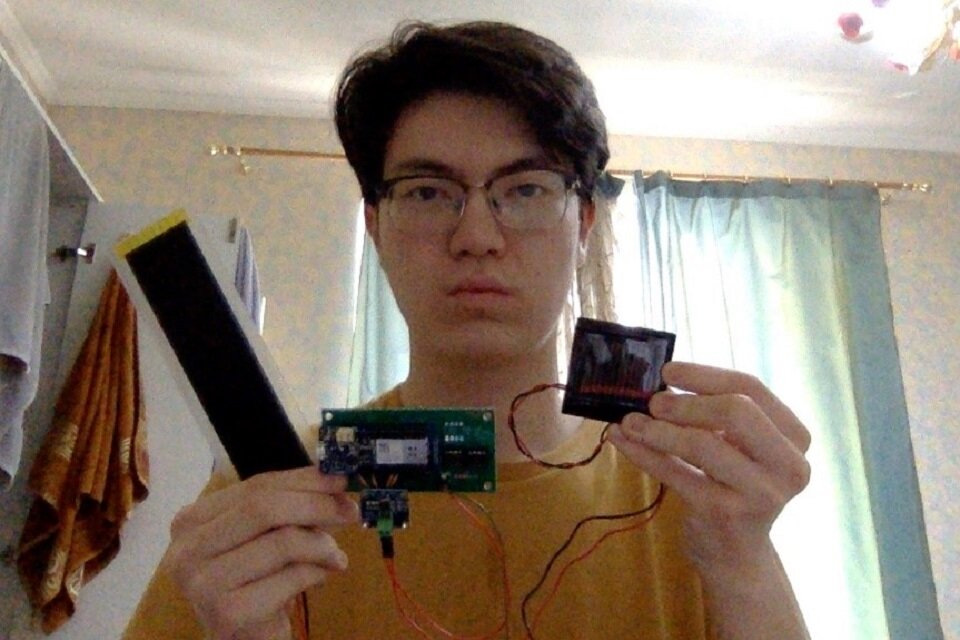Enabling distance learning and experiment with design thinking

(From left) Dr Chan Mau-hing, Wong Yun-kit, Chow Tsz-kin, Professor So Shu-kong

Students build their own “Smart IoT Weather Station” at home to conduct experiments during the COVID-19 pandemic.

Abubakir Gumar, who is based in Kazakhstan, receives the components of the “Smart IoT Weather Station” by mail from his HKBU teachers.
There was a time at the height of the pandemic when it was no longer possible to carry out teaching and learning activities normally. To overcome the limitations caused by social distancing measures, the faculty members and students of the Department of Physics adopted an innovative approach that enabled them to continue with classes and practicals remotely.
The “Green Energy Lab with Computers and Personal Mobile Devices” course offered by the Department teaches students to collect and analyse data related to green energy through the use of programming and smart devices such as sensors. When the pandemic came, face-to-face classroom and lab activities had to stop. The teaching team, led by Professor So Shu-kong, Associate Head, and Dr Chan Mau-hing, Lecturer, moved their teaching online, and they designed a set of materials that allowed students to build their own “mini weather station” at home to conduct experiments.
Transitioning to distance learning through design thinking
The set, which consisted of lab manuals and components of a “Smart IoT (Internet of Things) Weather Station” that students could use to do scientific experiments by themselves, were either sent by courier directly to the students or made available for collection on campus. The practical was re-designed and reduced in scale so that students could use the device at home. This also enabled them to have a similar experience to what they would have had in a physical lab on campus.
Guided online by the teachers, the students learnt about programming, data collection techniques, and how to assemble their individual stations. After setting up all the hardware and software, students then proceeded to measure the weather outdoors and monitor such data using a mobile application connected to each station. The recorded data, including temperature, wind speed, relative humidity, atmospheric pressure, UV index, carbon dioxide levels, solar radiation and sunshine radiation levels, was then uploaded onto an IoT platform for storage and further analysis.
A high degree of flexibility and autonomy
This new distance learning mode has led to a breakthrough for the course, as it generated diverse outcomes and enabled an unprecedented degree of autonomy beyond the limitations of a traditional classroom. “In the past, students all did their experiments in laboratories, and the results they obtained were almost identical. However, when students could choose the location for the experiments by themselves, the data sets and their reports were all different,” says Dr Chan. It also facilitated comparisons and expanded students’ scope of knowledge because they could share data from different geographical areas among themselves. The teaching staff were pleased to find the amount of diversity in the data and the individualised explanations that students submitted in their reports.
“One student was based in Kazakhstan and had no choice but to take remote classes because he could not come to Hong Kong in person. We also delivered a set of materials to him to make sure he was not left out. Working through problems together online has brought teachers and students closer, despite the long distance,” Professor So says.
Year 4 Physics students Wong Yun-kit and Chow Tsz-kin believe that this new learning model helped to foster their creativity, and it allowed them to learn more independently. Yun-kit appreciates the opportunity to practise operational techniques for experiments, while Tsz-kin says that he learnt to do active self-study and research outside the classroom.
For the teachers, the experience gained through this new teaching model will also be a meaningful reference for the ongoing development of the programme. “It certainly opened the door for us to seriously explore using more online tools for teaching,” says Dr Chan.
Source: Discover HKBU

